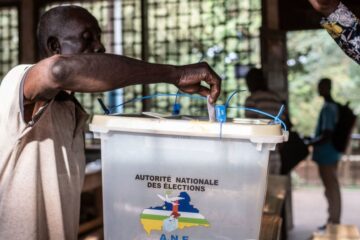A collapse of the Taliban regime in the medium term (3-5 years)?
This article is the publication of one of my assignments for school. It takes the form of a brief destined to a decision-maker.
Summary of conclusions
We have assessed that, despite latent threats, it is very unlikely that the Taliban regime will collapse in the medium term. In fact, internal divisions are closely monitored by the Taliban leadership, rebel groups are not powerful enough, repression and economic growth will prevent popular turmoil, and a foreign military intervention is highly improbable.
Discussion
We have identified the following reasons for which the Taliban regime could collapse in the medium term and we have analysed for each of them how serious the threat is.
A. Internal divisions (but the Taliban know the risk and will strive to remedy it)
The biggest threat to the Taliban regime resides in the internal division between pragmatic Taliban in Kabul and hardliners in Kandahar (Southern city). The former advocate for a more liberal style of governance in order to develop Afghanistan’s foreign relations and thus allow the country to grow economically and obtain international recognition. On the contrary, the Taliban’s more conservative fringe, at the head of the country under Hibatullah Akhundzada’s leadership, is not ready to compromise on religious dogma, fears antagonising its Pashtun base and deeply distrusts Western powers. Aside from diverging policy views, there can also be tensions between the Taliban’s various ethnic and regional groups. However, Taliban core leaders understand the threat of internal divisions for their regime and will therefore strive to reconcile differences and avoid splintering. Regime survival is their top priority.
A purge of the regime by hardliners is unlikely: the Taliban cannot afford losing competent administrators and cannot risk seeing fighters join rebellious movements. Besides, the Taliban strive to build up Afghanistan’s weak economy and administration and a purge would only further destabilise the country.
B. Rebel groups (but they are not strong enough to pose an existential threat)
The Taliban regime fights two main rebel groups, namely the Islamic State of Khorasan Province (ISKP in Eastern Afghanistan) and the National Resistance Front (NRF in Northern Afghanistan). These groups are only local sources of insecurity and don’t have the resources to pose an existential threat to the Taliban regime. Moreover, the ISKP, the NRF and the other Afghan jihadist and rebel groups don’t share the same objectives, which makes unlikely the formation of an alliance against the Taliban, and don’t benefit from foreign support.
Besides, with regards to armed forces that the Taliban defeated in 2021 and who have gathered behind Ahmad Massoud in the NRF, the regime has endeavoured to grant them general amnesty if they abstain from fighting and it has called on their participation to rebuild State institutions. As a result of the Taliban’s goodwill, the threat that these former enemy fighters represent significantly reduces.
C. Popular unrest turning into a full-scale insurrection (but the Taliban’s repressive authority and economic progress make it unlikely)
There is a risk that the Afghan population grows dissatisfied with the Taliban’s mode of governance that is violent and exclusive while public service provision and general living conditions are unsatisfactory (in 2022, 97% of the population lived in poverty). As a matter of fact, it is urban populations, that lived under Western influence during the war, that suffer the most from Taliban’s authoritarianism, strict application of the Shari’ah and limitation of women’s rights. However, rural populations that have been the most affected by the conflict accept Taliban rule for it brings law and order and gives them a stable frame in which they can live. Nonetheless, economic difficulties and food insecurity impact, though with varying degrees, the entire Afghan population. The ensuing discontent with the Taliban regime could potentially turn into a full-scale insurrection if exploited by rebel groups like those mentioned earlier.
Yet, the probability of seeing a revolution topple the Taliban regime remains low. First of all, the Taliban have a strong repressive system that crushes any form of political dissent in its early stage. Then, the Afghan economy is slowly but surely recovering from 20 years of war. Indeed, the regime has produced budgets, collected taxes and customs duties, reduced inflation and increased imports and exports over the past two years. However, revenue generation remains too low for properly developing the country and improving general living conditions. Economic cooperation with foreign actors like China, Pakistan, Iran, Russia, Turkey or Gulf States could eventually help Afghanistan thrive economically. For example, China is making Afghanistan part of its Belt and Road Initiative. Nonetheless, the Taliban’s inability to address national insecurity could be a major obstacle to the country’s economic cooperation with foreign partners, especially neighbouring ones who fear that this insecurity spread beyond Afghan borders.
D. Foreign intervention to topple the regime (but no one has interest in destabilising Afghanistan and the recent US failure is a deterring argument)
The probability that foreign State actors launch a military intervention in Afghanistan or support rebel groups to cause a regime change is very low. As a matter of fact, the Taliban or Afghan terrorist groups, including al-Qaeda, don’t pose a direct threat to the West and do not seem to be able, or willing in the case of the Taliban, to do so in the medium run; and even if they did, no country would take the risk of intervening and being humiliated like the US in 2021.
But more importantly, it is in the interest of regional actors to foster stability in Afghanistan by maintaining the Taliban in power. Indeed, instability could lead to migration waves, a spread of jihadist ideology and a development of illicit traffics.
Information gaps
To complete this brief, more information is required regarding:
- Popular support for the political alternatives proposed by the ISKP or the NRF;
- Unofficial foreign support for rebel groups and for the Taliban regime;
- The Taliban’s ability to recruit amongst the youth;
- The reliability of the information provided by the Taliban about the state of their economy;
- How long it will take for economic progress to translate into an improvement of living conditions and how long the Afghan population is ready to wait.



0 Comments